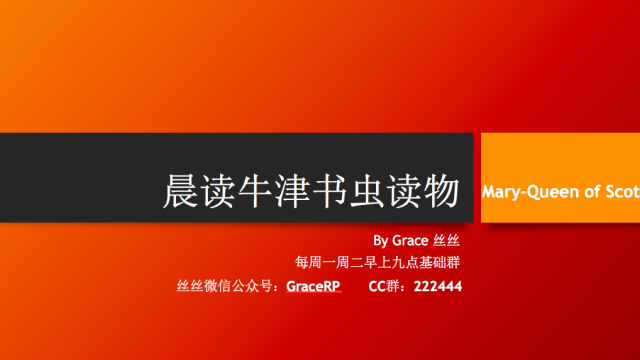綽號(hào)揭秘 美國(guó)為什么又叫山姆大叔
作者:Azura1012
來(lái)源:滬江詞匯社
2015-02-17 06:00
Sep 7, 1813: United States nicknamed Uncle Sam
1813年9月7日:美國(guó)綽號(hào)“山姆大叔
On this day in 1813, the United States gets its nickname, Uncle Sam. The name is linked to Samuel Wilson, a meat packer from Troy, New York, who supplied barrels of beef to the United States Army during the War of 1812. Wilson (1766-1854) stamped the barrels with "U.S." for United States, but soldiers began referring to the grub as "Uncle Sam's." The local newspaper picked up on the story and Uncle Sam eventually gained widespread acceptance as the nickname for the U.S. federal government.
1813年的這一天,美國(guó)獲得了它的綽號(hào)“山姆大叔”。這個(gè)名字是與一個(gè)來(lái)自紐約特洛伊叫塞繆爾·威爾遜的肉類包裝商有關(guān),他在1812年戰(zhàn)爭(zhēng)期間為美國(guó)軍隊(duì)提供桶裝牛肉。威爾遜(1766-1854)為美國(guó)在桶上蓋上“美國(guó)”的印章,但士兵們開(kāi)始用“山姆大叔的”來(lái)指這個(gè)食物。當(dāng)?shù)氐膱?bào)紙把它寫進(jìn)報(bào)道里,“山姆大叔”開(kāi)始廣泛地被當(dāng)作美國(guó)聯(lián)邦政府的昵稱。
In the late 1860s and 1870s, political cartoonist Thomas Nast (1840-1902) began popularizing the image of Uncle Sam. Nast continued to evolve the image, eventually giving Sam the white beard and stars-and-stripes suit that are associated with the character today. The German-born Nast was also credited with creating the modern image of Santa Claus as well as coming up with the donkey as a symbol for the Democratic Party and the elephant as a symbol for the Republicans. Nast also famously lampooned the corruption of New York City's Tammany Hall in his editorial cartoons and was, in part, responsible for the downfall of Tammany leader William Tweed.
19世紀(jì)六七十年代后期,政治漫畫家托馬斯·納斯特(1840-1902)開(kāi)始普及山姆大叔的形象。納斯特繼續(xù)發(fā)展這個(gè)形象,最終給山姆畫上了與其現(xiàn)今特征有關(guān)的白胡子和帶有星星和條紋的西裝。創(chuàng)造現(xiàn)代圣誕老人形象以及提出象征民主黨的驢子和象征共和黨的大象也要?dú)w功于出生在德國(guó)的納斯特。納斯特也在他的社論漫畫中公開(kāi)諷刺紐約市坦慕尼協(xié)會(huì)腐敗,而且,在某種程度上,他也是坦慕尼領(lǐng)導(dǎo)人威廉·特威德垮臺(tái)的原因。
Perhaps the most famous image of Uncle Sam was created by artist James Montgomery Flagg (1877-1960). In Flagg's version, Uncle Sam wears a tall top hat and blue jacket and is pointing straight ahead at the viewer. During World War I, this portrait of Sam with the words "I Want You For The U.S. Army" was used as a recruiting poster. The image, which became immensely popular, was first used on the cover of Leslie's Weekly in July 1916 with the title "What Are You Doing for Preparedness?" The poster was widely distributed and has subsequently been re-used numerous times with different captions.
也許山姆大叔最著名的形象是由藝術(shù)家詹姆斯·蒙哥馬利·弗雷戈(1877-1960)創(chuàng)造的。在弗雷戈的版本中,山姆大叔帶著一頂高頂帽,穿著藍(lán)色外套,向前直指觀看者。第一次世界大戰(zhàn)期間,山姆的這幅畫像,帶著“我要你加入美國(guó)軍隊(duì)”的字樣,被用作招募海報(bào)。這個(gè)形象變得非常受歡迎,它第一次被用在1916年7月萊斯利周刊的封面上,標(biāo)題是“你為戰(zhàn)備做了什么?”。該海報(bào)被廣為散發(fā),后來(lái)在不同標(biāo)題下被重新使用了無(wú)數(shù)次。
In September 1961, the U.S. Congress recognized Samuel Wilson as "the progenitor of America's national symbol of Uncle Sam." Wilson died at age 88 in 1854, and was buried next to his wife Betsey Mann in the Oakwood Cemetery in Troy, New York, the town that calls itself "The Home of Uncle Sam." ?
1961年9月,美國(guó)國(guó)會(huì)認(rèn)可塞繆爾·威爾遜為“美國(guó)的國(guó)家象征山姆大叔的鼻祖”。威爾遜1854年逝世,時(shí)年88歲,被埋在紐約特洛伊奧克伍德公墓他妻子貝齊·曼的旁邊,這座城鎮(zhèn)自稱是“山姆大叔的故鄉(xiāng)”。
- 相關(guān)熱點(diǎn):
- 英語(yǔ)翻譯
- 英語(yǔ)雙語(yǔ)閱讀
- 雅思滿分











